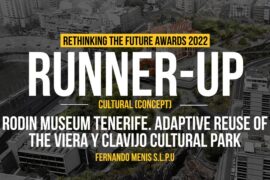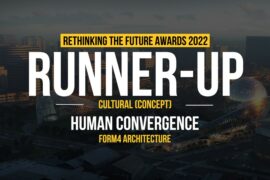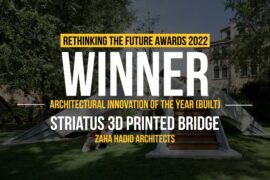Project Info
Architects: Renzo Piano Building Workshop
Location: Conci “Villazzano 3″, 38123 Trento, Italy
Design Team: S. Scarabicchi, E. Donadel, M.Menardo, M.Orlandi, G.Traverso, D.Vespier and P.Carrera, L.Soprani, M.Pineda; I.Corsaro
Year: 2013
Photographs: Shunji Ishida, Alessandro Gadotti, Enrico Cano, Stefano Goldberg, Paolo Pelanda
Consultants: Iure, Riccardo Giovannelli, Manens Intertecnica, Dia Servizi, GAE Engineering, BBM, Origoni & Steiner, Piero Castiglioni
Introduction
The area extends from the railway line and Palazzo delle Albere, on Via Monte Baldo, up to the left bank of the River Adige. This area has an extremely high potential, but is constrained between two physical and psychological barriers to the east and west:the railway, separating the area from the town’s nearby historical centre, and Via Sanseverino, which acts as an urban boundary between the area itself and the river’s natural environment.

Details
The project is mainly aimed at reintegrating the existing urban landscape and exploiting the site’s relationship with the river environment by making better use of its natural resources.
The project’s secondary goal is to urbanize these localities, which for social and cultural reasons have become marginalized with respect to the rest of the city, by including a range of different structures (such as residences, office buildings, shops, cultural venues, conference centers and recreational areas) and by concentrating their volumes within just one sector of the area in order to free up enough space for a large park.

(…) This new district is primarily characterized by its innovative urban fabric, which features a specific dimensional hierarchy of roads, pathways, squares and open spaces. Via Sanseverino and Via Monte Baldo provide Road access to the area.
This new urban fabric is also relatively traffic-free. It is restricted to residents, taxis and public transport, and offers numerous pedestrian walkways that wind into the courtyards of certain building complexes.

The new district therefore offers an atmosphere of meeting places, open spaces, workplaces and trade areas, where individuals can easily get around on foot and explore the large number of aggregation points within this widely varied environment.
The main east-west streets, which traverse the railway embankment in order to unite the new road scheme with that of the existing urban fabric, are lined along their entire length by two rows of trees, and lead directly into the park area on the shores of the River Adige, where cultural and recreational centers are expected to arise. In accordance with the plans that have already been established by the City Council, it will be necessary to construct new railway underpasses for vehicles and pedestrians, to render this connection both physically and visually feasible.
The construction volumes have even been calculated based upon an examination and careful analysis of the City of Trento’s historic centre, as well as the way in which the different activities will occupy the urban spaces themselves and the proportions between the width of the streets and the heights of the surrounding buildings. In fact, due to the height, the cadence and dimensional scale of the buildings themselves, which are comparable to those of the city’s historic centre and the existing industrial structures, the project favors a horizontal interpretation of the relationship between the new buildings and the open spaces foreseen by the design.

The entire new district will feature a number of 4 to 5 storey buildings, with an in-line or courtyard layout, along with the presence of two “special objects”, serving as aggregation points at all hours of the day, for both the complex’s residents and the rest of the city.
The Power System: The project is aimed at exploiting the location’s peculiarities with respect to the specific features of its landscape and natural surroundings.Due to its extent and the amount of construction involved, the project is perfectly suited to an approach whereby it will be harmoniously inserted within its surrounding environment, while at the same time exploiting a number of available elements. For this reason, we conceived a centralized electrical power system which, in terms of economy of scale, will optimize the new district’s resources and reduce its operating costs.
This concept gave rise to the idea of a single power station, located beyond the confines of the complex itself on the right shore of the River Adige, which will distribute and recover energy from each sector, thanks to a main underground pipeline running along a north-south axis.This network will have a single delivery point in the basement of each building sector.
This system, comprised of a single centralized power station and various remote substations, will allow for the machinery and utilities to be concentrated locally, thus optimizing costs and ensuring a limited environmental impact.Furthermore, the system will be bolstered by each building’s special energy-saving design, the layout and construction of which will guarantee the absolute highest standards in terms of insulation and heat loss.
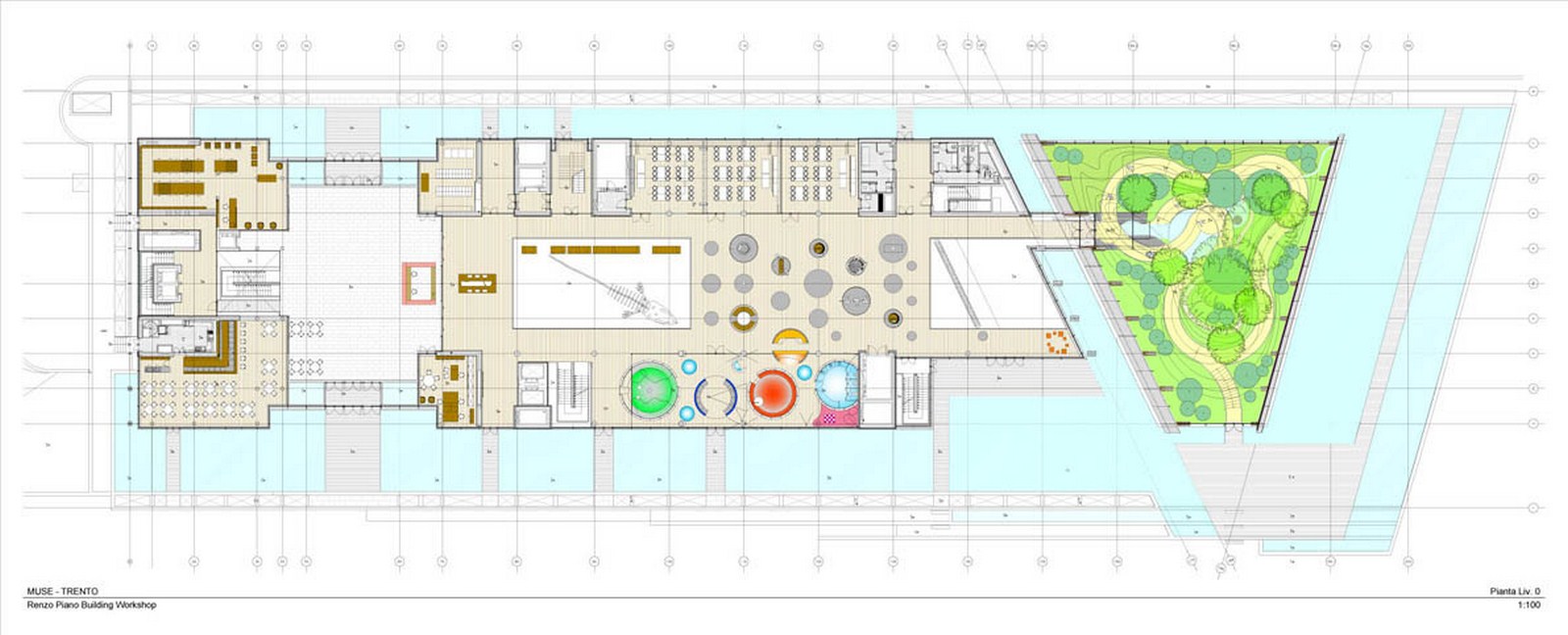
The Water System: One of the project’s additional themes is the presence of water with in the park area. To this end, one of the main objectives from the outset has been to bring city of Trento closer to its main artery: the River Adige.
The city’s historic centre has been deprived of this proximity since the mid-nineteenth century, when the river was redirected by the Austrians in order to drain the wetlands and construct the railroad. In addition to physically distancing the river from the city itself, these works also increased the river’s average gradient and water velocity, as well as its water level variations throughout the different seasons of the year. As a result, the Ex-Michelin area’s proximity to the river today is merely psychological, as its current water flow, which is characterized by periods of unexpected flooding, prevents it from being used to any real benefit.
This specific focus upon the issues and problems associated with the river’s presence led to the idea of including a system of canals within the project itself. These canals will traverse the area from north to south and will feed the two large bodies of water upon which the structures dedicated to public functions seem to “float”.The water system, therefore, provides for a number of different recreational and technological functions, with free surface tanks acting as reservoirs for the irrigation and fire-prevention systems, and even serves as a flood-control system for the River Adige. Moreover, the water system will even serve an important cultural function thanks to the network of informative pathways to be built along the banks of the canals themselves, which will be used by the Science Museum for studies on specific scientific topics.
The Public Parks System: The public park represents the third major theme of the project. The connection system, which is comprised of rows of trees that make up the project’s backbone on the east-west axis, serves as a unifying element for the project’s three main protagonists: the existing urban landscape, the new district and the riverside park in addition to the tall trees along the roads and pathways, the greenery will also be comprised of other trees of medium height, forming denser and shadier thickets, not to mention a number of monumental exemplars, some of which are already present on site.
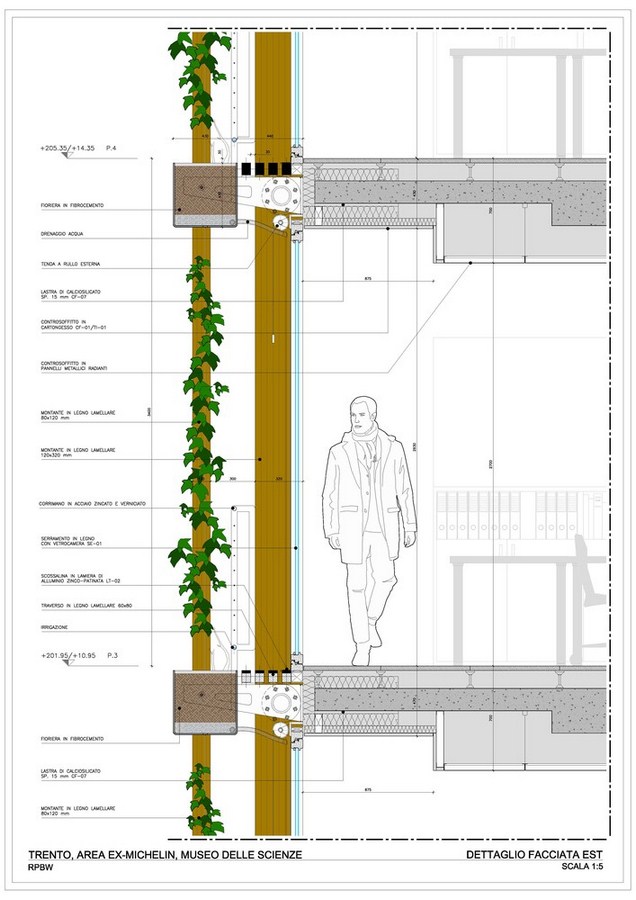
The latter two types of trees will be found in a grassy area, which will extend from the front of the buildings to the banks of the river on the other side of Via Sanseverino, and from Palazzo delle Albere all the way to Via Monte Baldo.This enormous and fully-equipped park area will be entirely available for outdoor, recreation or relaxation activities; a place in which the only decorative elements will be the seeded flowers mixed with the tenacious lawn, which will be cut to various heights.
The Building System: The project essentially includes two types of buildings:the in-line buildings along the axis of the railway will house the non-residential facilities. These buildings will be soundproofed using carefully designed cladding technologies on the east façade and, in and of themselves, will constitute a barrier against the noise from the railroad for the rest of the district extending into the park. The courtyard buildings, on the other hand, will be of various shapes. They will offer views of the internal communal gardens from the streets, including functions of a mainly residential nature.The structures of greater public interest are characterized by an increased typological freedom.
The Roofing System: The roofing system represents one of the most important and unifying features of the entire project. Despite the diversity of their various functions, heights and inclinations, these elements will work together to form a unique semantic system that covers all of the edifices, favoring the use of wood and steel structures.In this case, once again, the project’s two cultural “poles”, i.e. the science museum to the north and the area to the south, destined to accommodate a multi-purpose conference centre (amongst other structures of collective interest), are characterized by maximum freedom of expression.
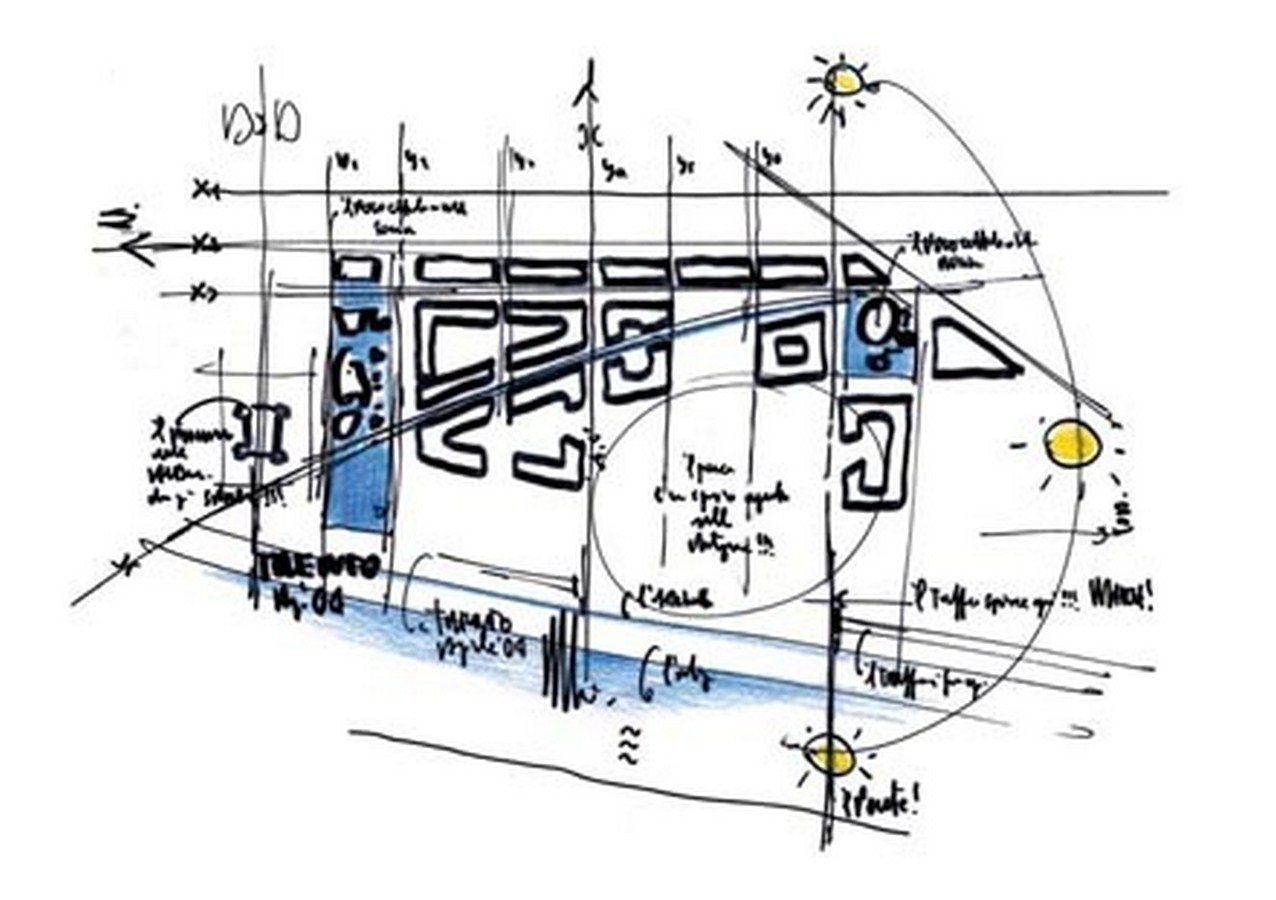
The Existing Structures: In order to ensure the area’s balanced development in complete harmony with the rest of the urban fabric, the project foresees the establishment of a range of different functions, such as residences, offices, shops, cultural venues and recreational areas.
In fact, the buildings’ various uses will occupy different floors, based on a horizontal stratification reminiscent of any historical city.The proximity of the various patrons, above all during prolonged or complementary periods of use, will prevent the negative effects of low, periodical and peak frequency periods, above all on a social level. This new district, therefore, will be alive, densely inhabited and frequented at all hours of the day, offering a wide range of exciting opportunities in terms of housing and employment, as well as social, recreational and cultural activities.
The Science Museum: The new Trento science museum is located in the northern portion of the new district foreseen for the Ex-Michelin area, and is housed is what is known as the A-block, situated at the end of the main pedestrian route that connects the area’s higher-end activities with the functions of the greatest public interest.It is also located in close proximity to the new public park and Palazzo delle Albere, with which it will boast a respectful and productive relationship.
The idea was based on establishing a perfect compromise between the need for flexibility and the desire for a precise and consistent response to the scientific content of the cultural project itself.The museum’s magnificent exhibition themes can even be recognized in the form and volumes of the structure itself, all while maintaining the flexible layout typical of a more modern museum.
In addition to the volumetric interpretation of the museum’s scientific contents, the architectural design has also been dictated by the museum’s relationship with its surrounding environment:or rather the new district, including the park, the river and Palazzo delle Albere.Thus, all these inputs have physically taken shape thanks to the clearer definition of the specific architectural elements that make up the rest of the district itself, above all in terms of its tertiary, residential and commercial functions.
The building is made up of a sequence of spaces and volumes (solids and voids) resting (or seemingly floating) upon a large body of water, thus multiplying the effects and vibrations of light and shade.The entire structure is held together at the top by its large roof layers, which are in complete harmony with its forms, thus rendering them recognizable even from the outside.Starting from the east, the first structure houses functions which are not available to the public, such asadministrative and research offices, scientific laboratories and ancillary spaces for on-site staff.
Next, we find the lobby. It is aligned with the main axis of the district and traverses the entire depth of the building towards the north, overlooking the park area outside Palazzo delle Albere.
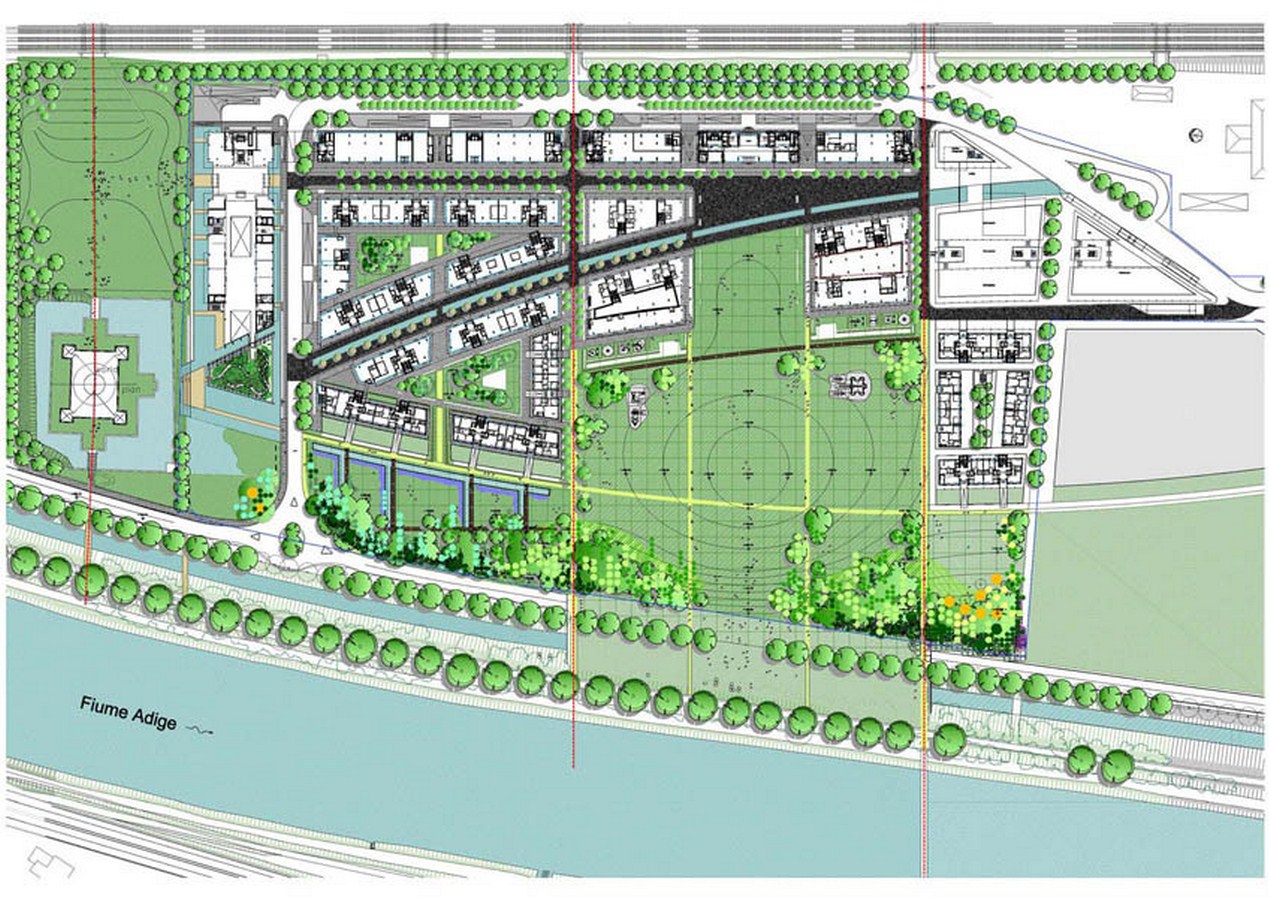
The scientific themes of the mountain and the glacier are subsequently dealt with through a series of exhibition spaces, which gradually rise up from the basement level and nearly “break through” the roof, thus creating an observation point immersed within the environment, from which a true “simulation” of the real experience can be enjoyed.This experience is highlighted by ample exhibition spaces on two or three levels, with ceilings high enough to welcome extremely large sets and backdrops.
The building’s shape and/or “rain forest” function also serves to define is interior space and functionality.In fact, the building represents a large tropical greenhouse which, during certain periods of the year, is even capable of establishing a functional relationship with the specific exhibition stands (even outdoors), in which water, lighting and greenery often play a key role in defining the visitor’s natural surroundings.The educational and laboratory services for the public are offered in a series of aboveground structures located alongside the exhibition areas, thus promoting interactive experiences for each individual subject matter.


